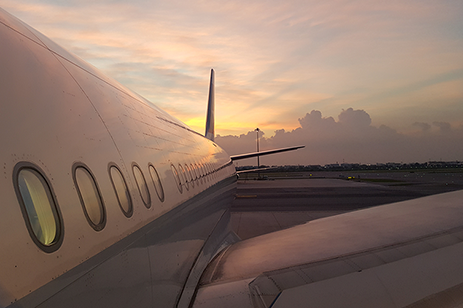
Most people are familiar with flight recorders, often called “black boxes”, that are immediately sought following an aircraft crash. These crash-survivable units have helped improve aviation safety since their introduction in the 1950s, providing vital information to ensure that, in the event of an accident, investigators can learn more about the chain of events leading up to it.
From this, they may be able to make recommendations to help lower the risk of similar incidents occurring in the future. However, what a lot of people may not know is that not all aircraft are required to carry flight recorders.
Commercial airlines often use two types of flight recorders – a flight data recorder (FDR) and a cockpit voice recorder (CVR) – for different functionality. These functions can also be combined into a single unit, which is often more desirable on smaller aircraft to help reduce size and weight requirements, and indeed on larger aircraft to enhance redundancy (as a failure in one unit can be temporarily covered in the other until the aircraft can be scheduled for maintenance).
However, according to the Federal Aviation Administration (FAA), aircraft with six or fewer seats require no recorder of any kind, while those with 10 or fewer require only a CVR. Additionally, the aircraft’s application is an important criterion for understanding what is required in terms of flight recorders. Despite these regulations, the large number of people who possess aircraft without recorders, as well as the increasing amount of accidents involving light aircraft, may pose as a challenge in uncovering causes during investigations.
There are three main types of flight recorders used today, these can be broken down into the following categories:
- Non-crash protected flight recorder
- ED-155 crash protected flight recorder
- ED-112A crash protected flight recorder
Non-Crash Protected Flight Recorder
These are generally less expensive, compact and lightweight, quick access recorders that use removable media and/or a USB interface to transfer data. Though they can serve as useful flight data monitoring (FDM) recorders, they may not meet any future regulations regarding crash survivability that may come into force. They are not designed to survive a crash but may do so if the event only results in minor damage.
ED-155 Crash Protected Flight Recorder
ED-155 crash recorders offer significant crash protection compared to non-crash protected recorders, yet less than the ED-112 variety (the well-known black box). They are used to record aircraft data, cockpit audio, airborne images, or data-link messages in a robust recording medium. Their main purpose is to aid accident investigation, but they can also be used in flight training and FDM. Their enhanced crash protection will make data recovery more likely in a serious accident than a non-crash protected recorder, but they are not as tough as ED-112 varieties. Additionally, an underwater locator beacon (ULB) is not required in this category, making recovery at sea much more challenging, if even possible.
ED-112A Crash Protected Flight Recorder
ED-112A crash protected flight recorders are the famed black boxes and gold standard for crash protected flight recorders. They are required to store a mandatory set of data, cockpit audio, and datalink messages. Other types of data, such as cockpit images, can be stored, but it is not currently mandated.
They require 90-day ULBs and must meet extreme physical and environmental tests that include withstanding hours of high temperatures. In turn, this increases their size, weight, and cost if compared to the other two options. Any large passenger aircraft will typically have this variety installed.
Choosing the Right Recorder
Knowing the difference between each type of flight recorder is important. Understanding the pros and cons of each prepares you to choose the right one depending on your need, required functionality, and budget.
If you’re interested in learning how to select the right flight recorder for the job and becoming familiar with the regulations that surround that choice, we explore the topic in our white paper, Mandatory Parameters and Data Storage Requirements for Flight Data Recorders.